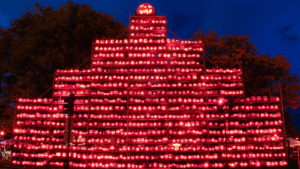The University of Alabama in Huntsville (UAH) is challenging one of the most iconic records in meteorological history — the world’s hottest temperature of 134°F (56.7°C), recorded on July 10, 1913, in Death Valley, California.
Published in the Bulletin of the American Meteorological Society, the study by Dr. Roy Spencer and Dr. John R. Christy of UAH’s Earth System Science Center (ESSC) presents compelling evidence that the 1913 reading was likely inaccurate, and that the true temperature was closer to 120°F (48.9°C).
The researchers, along with climatologist William T. Reid, analyzed over a century of meteorological data and historical documentation, including letters, photos, and records from Greenland Ranch, where the measurement was taken. Their findings suggest that Oscar Denton, the ranch foreman and cooperative observer for the U.S. Weather Bureau, may have recorded temperatures from an unofficial thermometer that was poorly sited on a shaded veranda, rather than using Weather Bureau-approved equipment.
Dr. Spencer explained, “We demonstrated with 100 years of data that Death Valley’s temperatures can be reliably estimated using nearby higher-elevation stations. Based on that, the 1913 record doesn’t fit the pattern — it’s simply too high to be credible.”
The study also notes that more recent readings of 130°F (54.4°C), recorded twice in the past few years at nearly the same location, are more consistent with the area’s true climatic potential.
If confirmed, this research could redefine the official world record for Earth’s highest temperature, long held by Death Valley.
Dr. Christy emphasized the importance of historical accuracy, saying, “Correcting the record isn’t just about numbers — it’s about scientific integrity and understanding how Earth’s climate truly behaves.”







